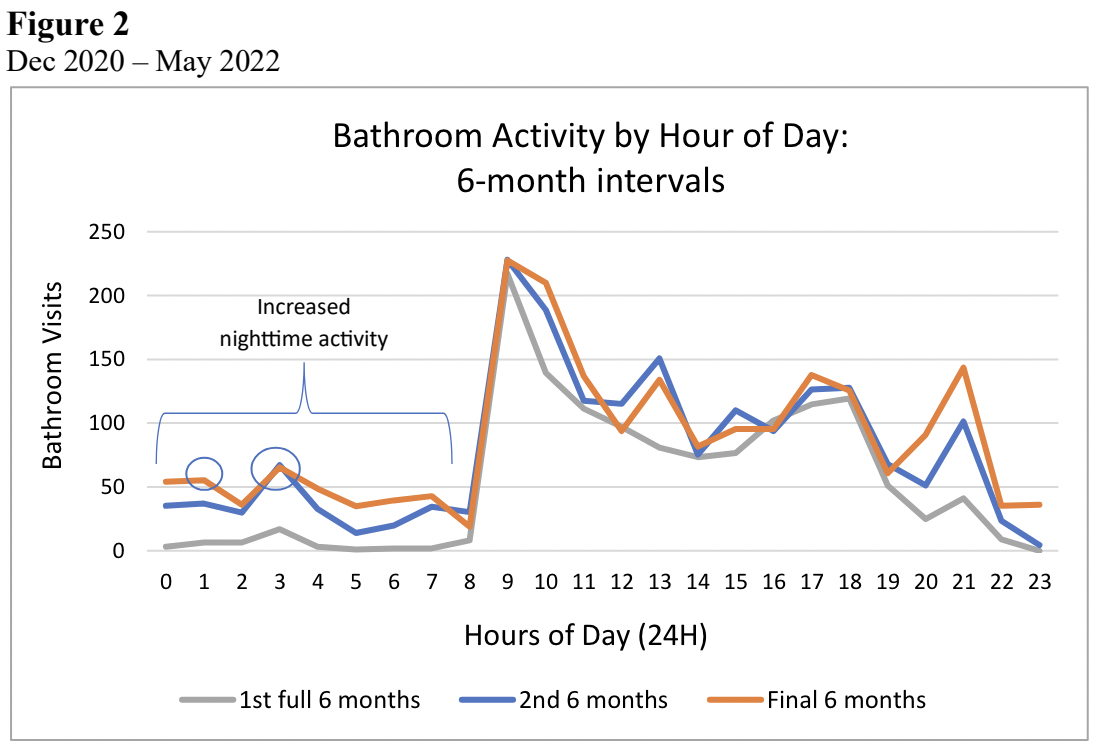Sovrinti Case Study
Increasing Fall Risk
Falls are a significant concern for older adults in the United States, causing injuries and even deaths. With a quarter of older adults experiencing falls annually, and millions needing emergency care or hospitalization, it's crucial to identify and address the rising risk of falls in this demographic. However, detecting this risk can be tricky due to various factors like limited assessment tools, underreporting by older adults, and a lack of awareness from caregivers about the older adult's activities when alone. The Sovrinti system offers a solution by continuously monitoring activity patterns, providing real-time and long-term insights into fall risks for older adults and their caregivers.
Background: The Sovrinti system tracks individuals' activities in homes or senior living facilities using advanced technology. In a study with 124 older adults, it effectively identified increased fall risk over 18 months for one participant (CR), even though caregiver interviews using the Activities of Daily Living (ADL) scale showed no concerning changes.
Results:
Nighttime Bathroom Visits: Sovrinti data showed a dramatic increase in nighttime bathroom trips, suggesting a potential health risk.
Fall Risk Correlation: The rise in nighttime activity (particularly at 1am and 3am) aligned with research linking such activity to increased fall risk in older adults. Sovrinti's data suggested the participant's fall risk doubled by the end of the study.
Caregiver Awareness: Though the caregiver noticed some increase in nighttime activity, Sovrinti's detailed data allowed for earlier intervention.
Possible Interventions
Caregivers can discuss fall-risk with a doctor, review medications, reduce evening fluids, improve bathroom safety by installing grab bars and nightlights, schedule regular bathroom visits before bed, and leverage Sovrinti's real-time alerts for immediate assistance when needed. These steps can proactively reduce fall risk and ensure the participant's safety.
For Further Analysis
Examining nighttime bathroom visits could unveil health insights, while correlating them with daytime activities may pinpoint fall risk factors. Integrating nocturnal behavior analysis with mobility data can help catch health declines early. Longitudinal studies will refine interventions, bolstering older adults' independence and well-being.
Figure 1: This graph displays the older adult's bathroom visits by time of day from November 2020 to May 2022. The increasing density of data points in the upper right-hand quadrant indicates a progression from not using the bathroom during the night to multiple visits during normal sleeping hours.
Figure 3: This graph shows bathroom visits increase notably between midnight and 8 am in the latter study periods, particularly at 1 am and 3 am. The significant rise in nighttime visits from start to finish indicates a significant increase in fall risk over time.


